Hosted by Willow Cheeley
My garden is a daily practice in a set of beliefs I’ve held since I could toddle outside. All environments, including and especially our backyards, are habitats for living things. I use design language to express my ideas and balance the human experience in my garden, but it’s not a set-piece. The garden is experimental and adaptive to change. It’s joyful and persistent. Visitors are given familiar spatial references but nudged to read the landscape on its own terms.
I started almost 15 years ago by pulling apart the materials and assumptions of the traditional suburban landscape that came with our house. Four-dimensional plant associations now support generations of critters. I don’t have a large property, but give priority to native plants and animals otherwise losing ground in my neighborhood. Every year I make additions or alterations as I work with what the garden wants to be.
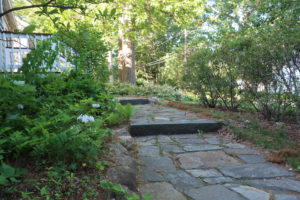
Granite pavers and stone dust form a wide and welcoming front walkway with plants on both sides. Native shade perennials are planted against the house where some snow can be piled in winter. A line of dwarf inkberry on the outside edge of the walkway buffers visitors and from the street gives the illusion of a familiar foundation planting.
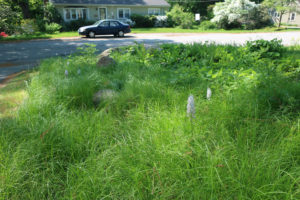
Mow-optional Pennsylvania sedge planted with wild Camassia replaces a section of lawn on a gentle slope.
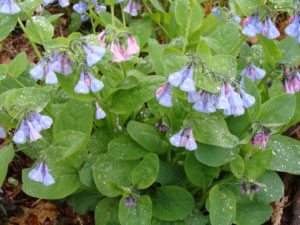
Spring ephemerals like Virginia bluebells in the front yard feed early insects and bring seasonal color to the streetscape. These species offer eye-catching alternatives to overused crocus and daffodils and help promote native plants to neighbors.
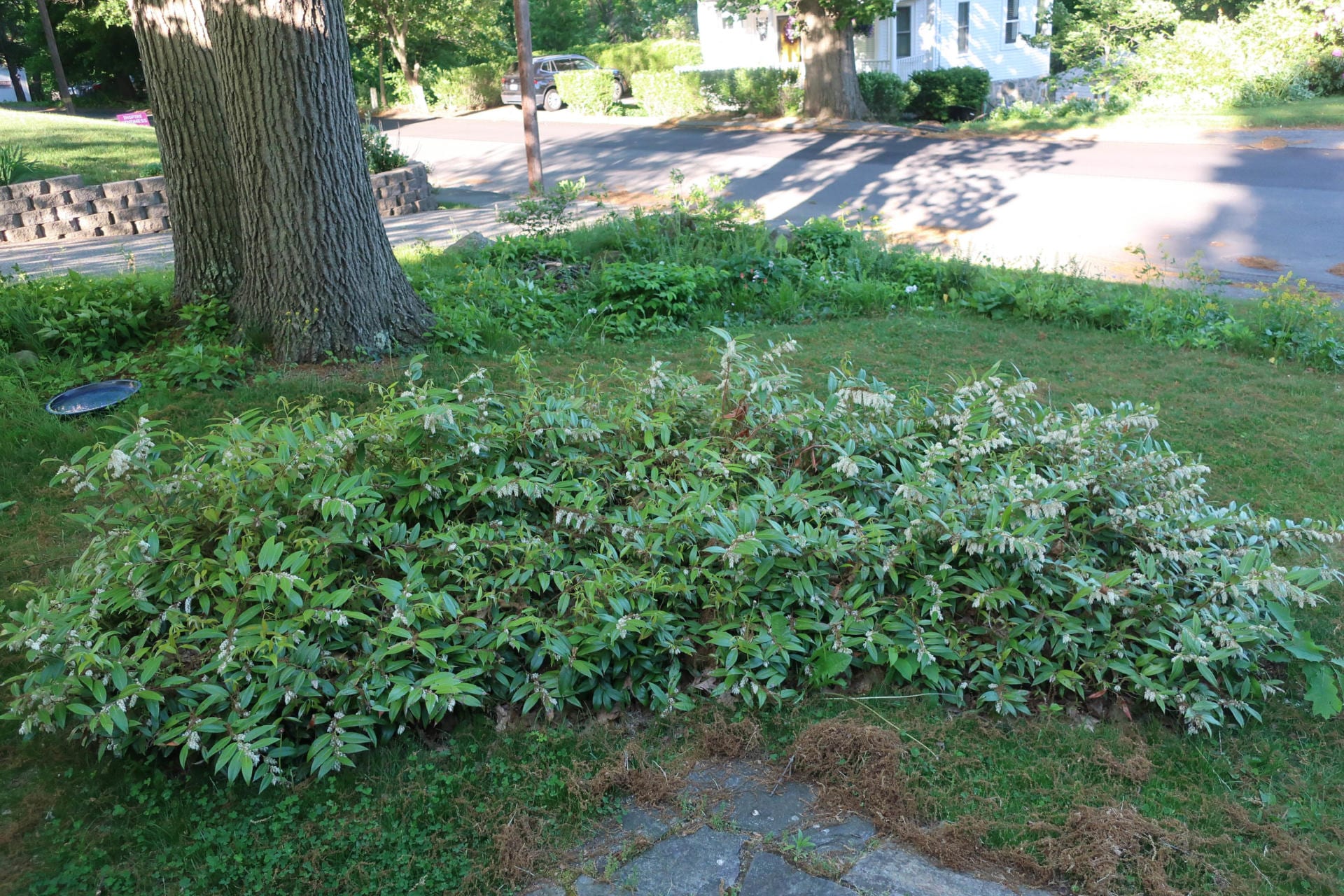
Coast Leucothoe provides structure and an appropriately scaled buffer against the street. Maintaining a slice of mowed lawn communicates order while a broad corner of layered shade tolerant native perennials adds texture.
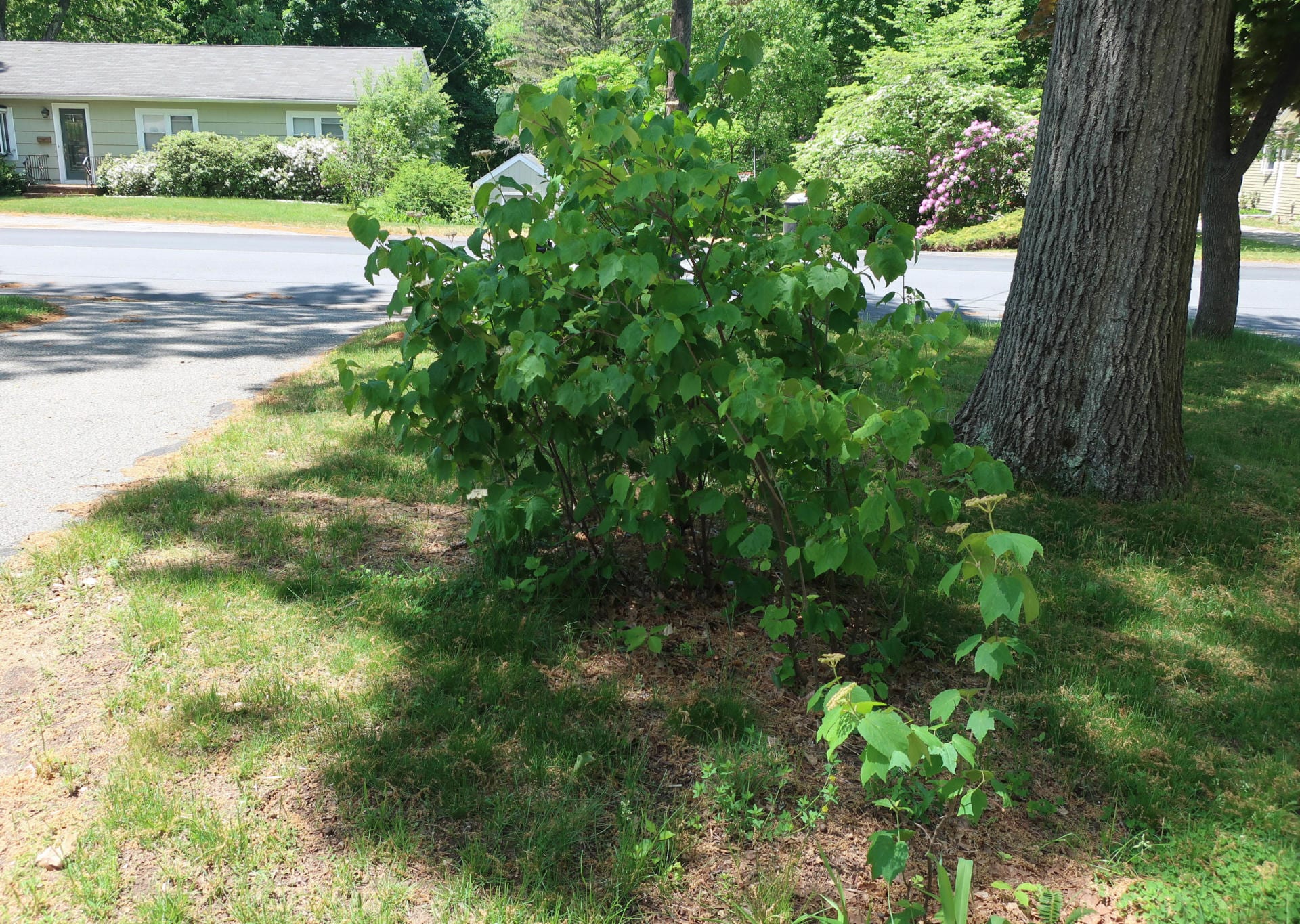
A line of mapleleaf viburnum is used as a screen along the driveway while allowing visual connection with neighbors. Tolerant of shade and dry soil. Provides fall color, flowers, and fruit for the birds. The informal structure has mitigated some minor damage from shoveled snow.
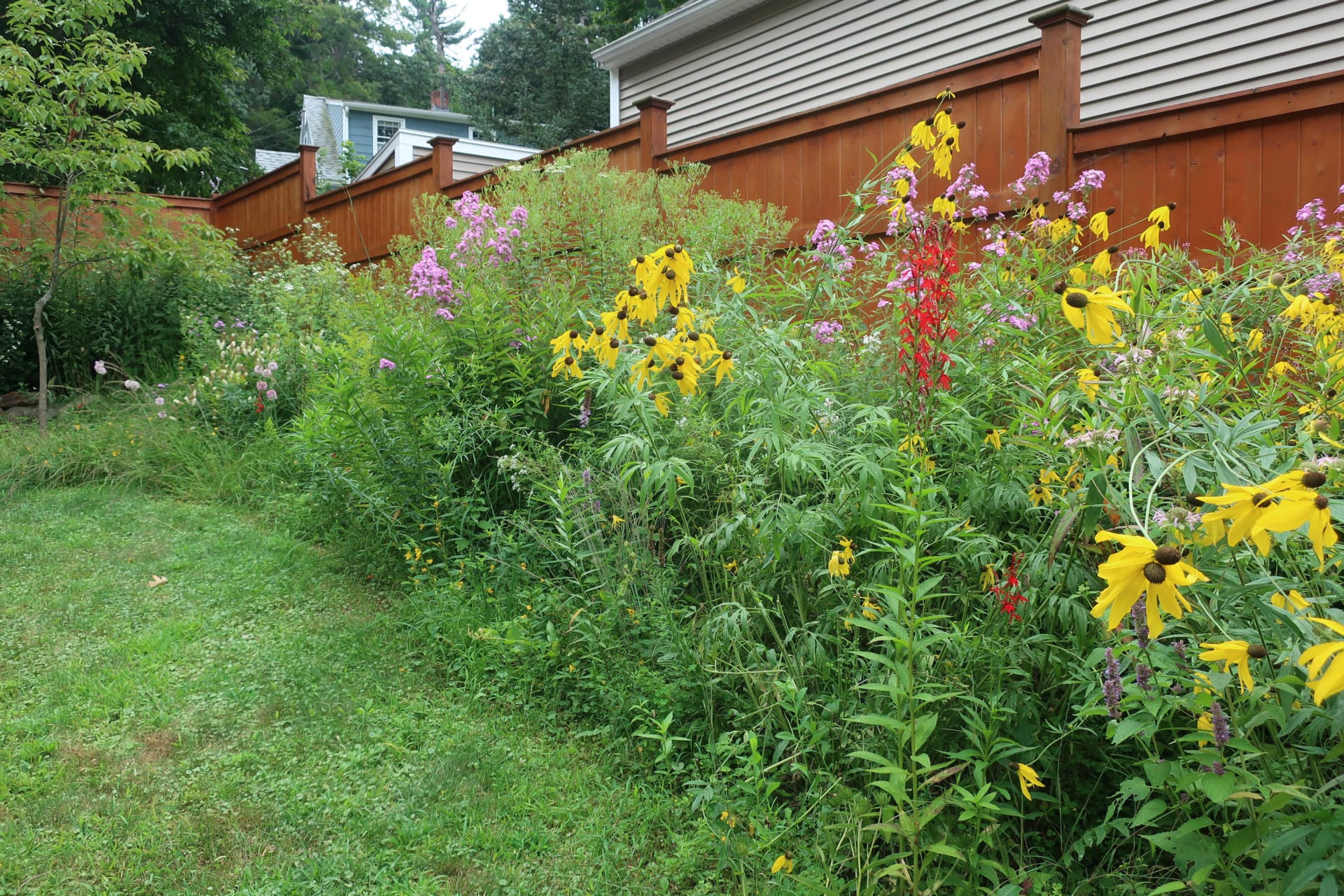
Curvilinear edge cut into the lawn to clearly delineate about 300sf of diverse backyard meadow. Taller plants at bottom of slope and shorter at the top help maintain proportion and legibility.
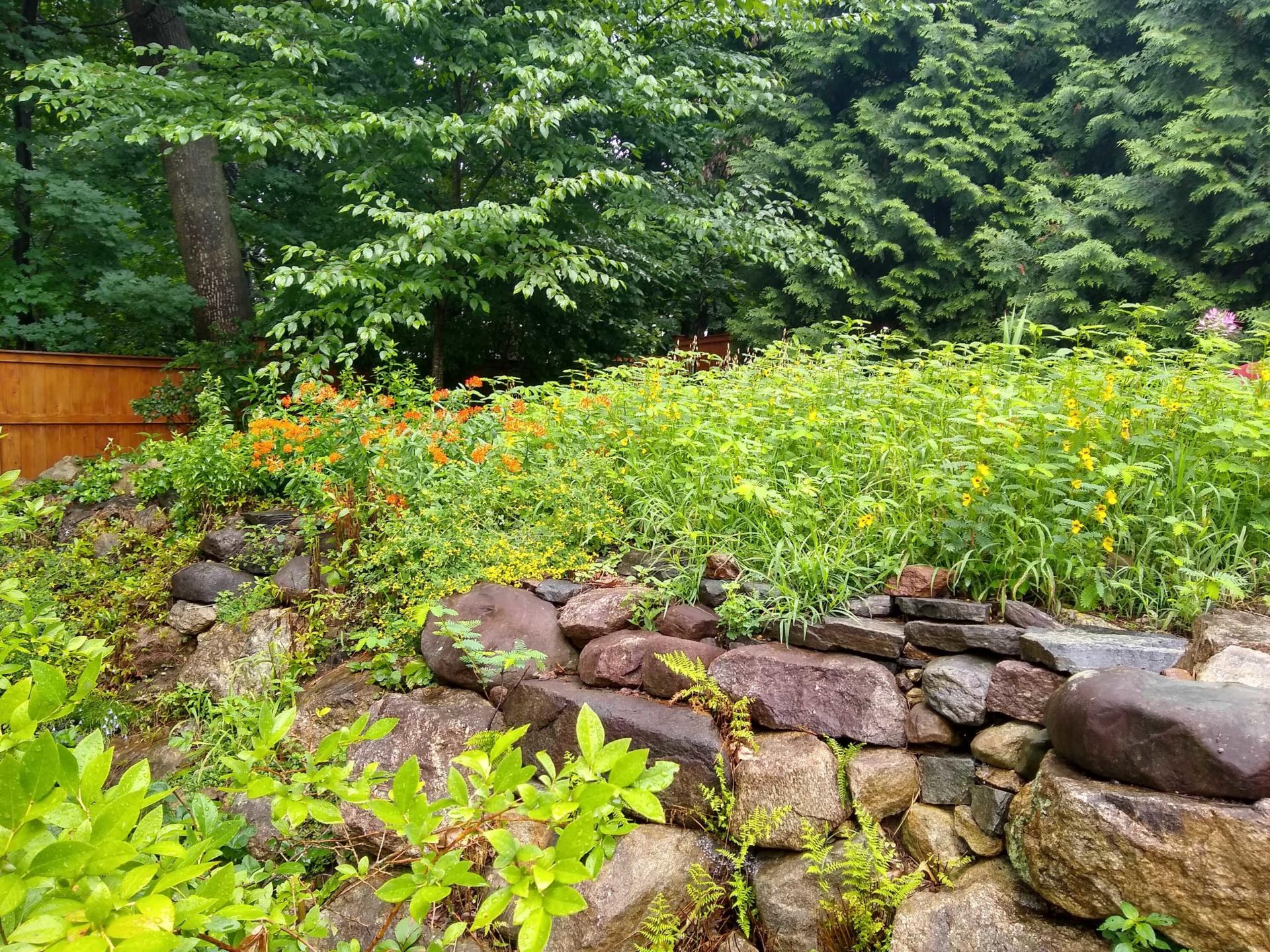
Partridge Pea experiment fed hundreds of bumblebees every morning. Mortarless stone wall supports overwintering wildlife. Tall ‘Green Giant’ arborvitae hybrid provides dense evergreen screen and bird nesting cover not found elsewhere in the neighborhood. Blueberry bushes benefit from low elevation spots in the backyard.
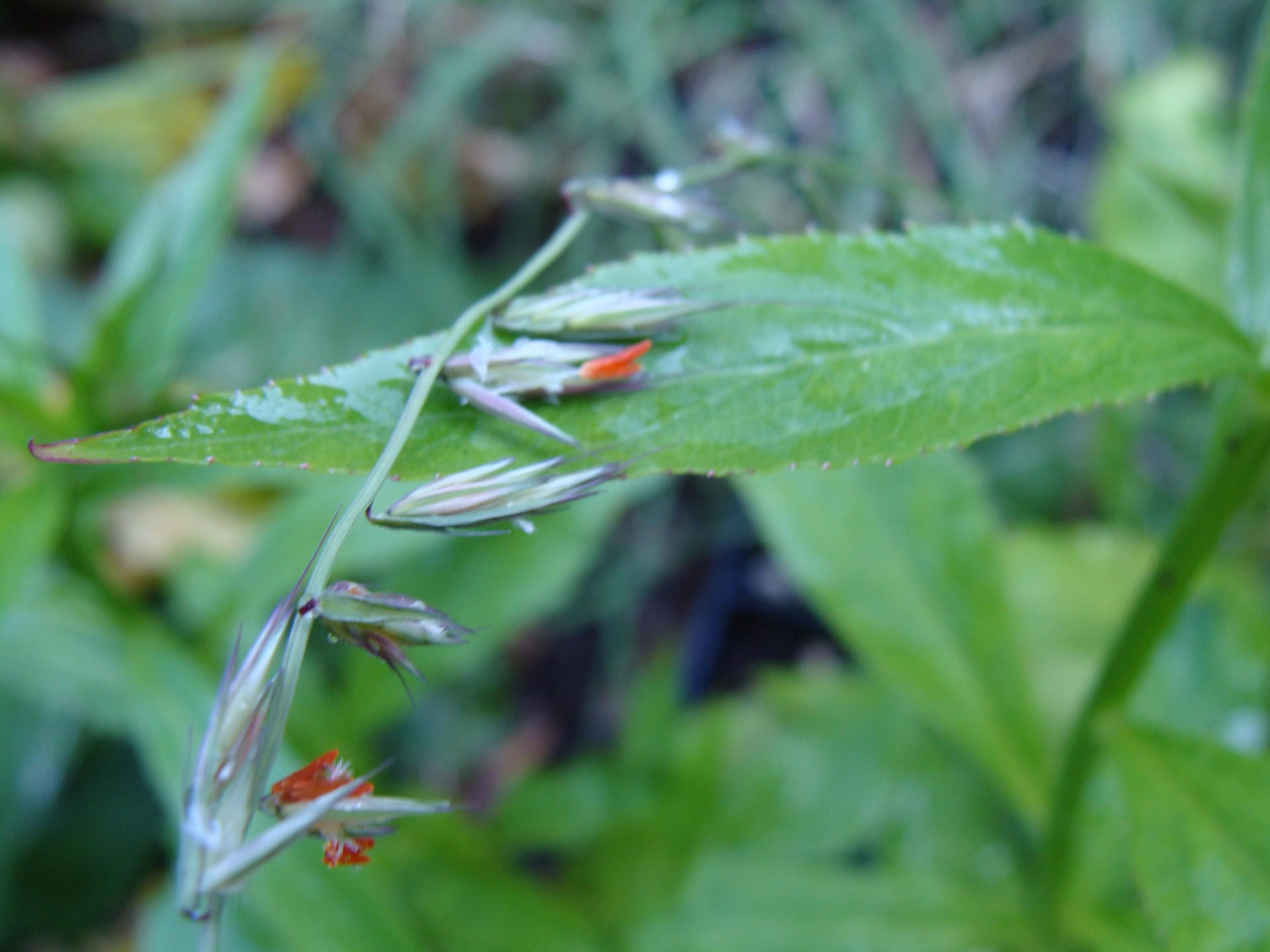
Native plants with small details are included among the show-stoppers. Side-oats Grama provides just one example of flowers in miniature.
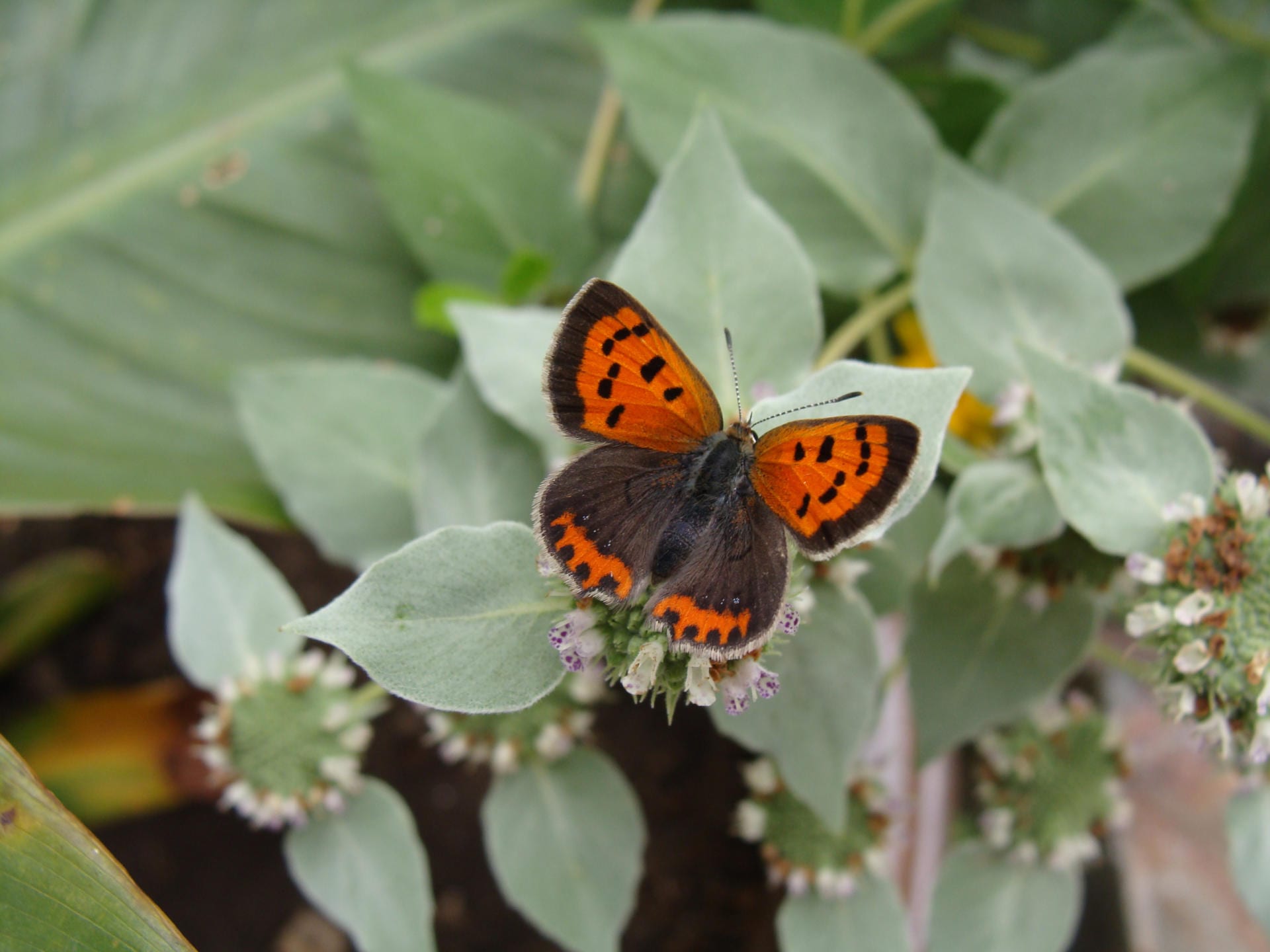
American Copper butterfly on mountain mint. Many new insect species including assassin bugs, digger wasps, monarchs, and leafcutter bees now interact with the garden. Host plants are also part of the landscape.
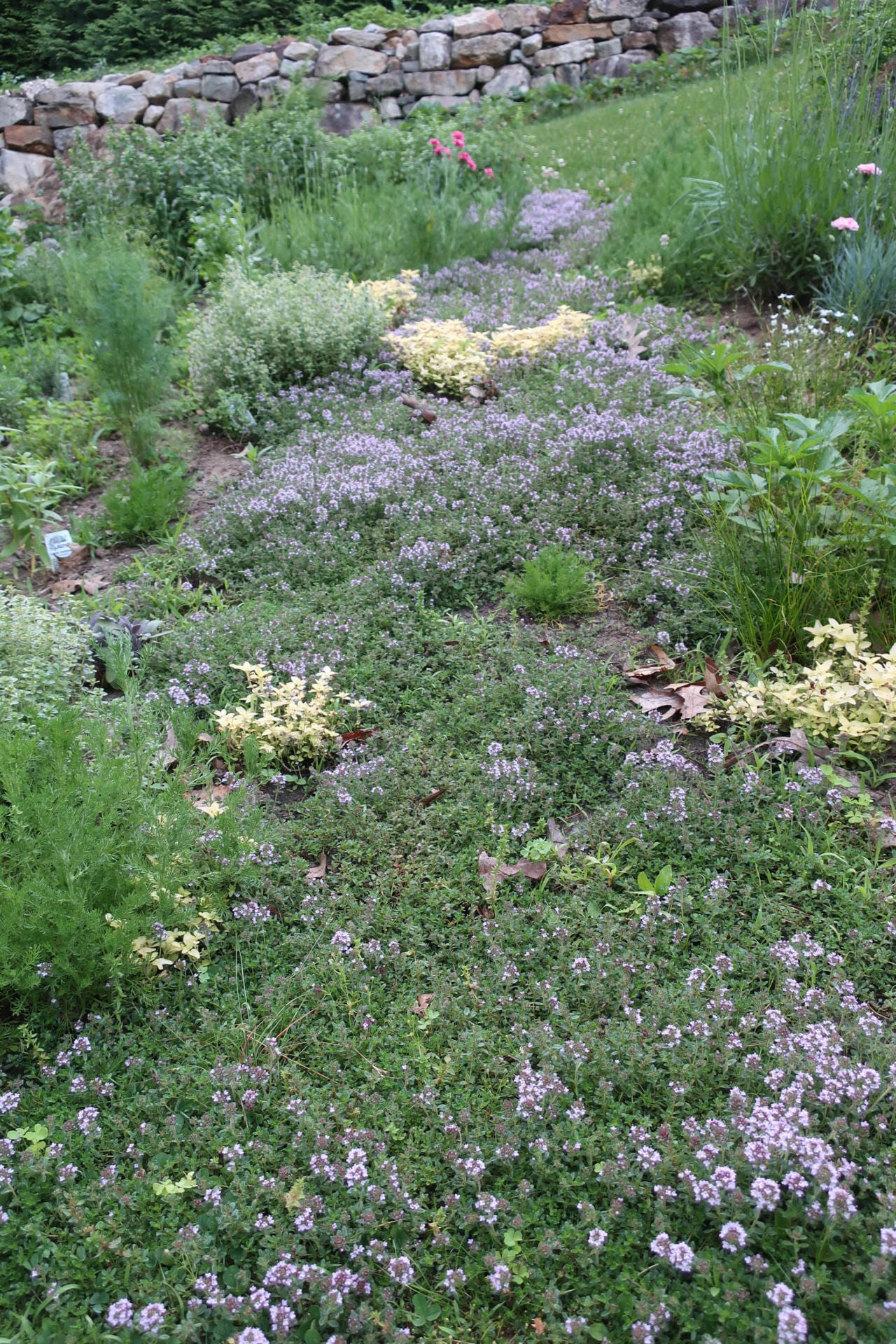
Non-natives are included in the garden for food and fragrance. Culinary herbs for example are also allowed to flower to offer additional insect habitat and ground hunting opportunities for birds, toads, and snakes.
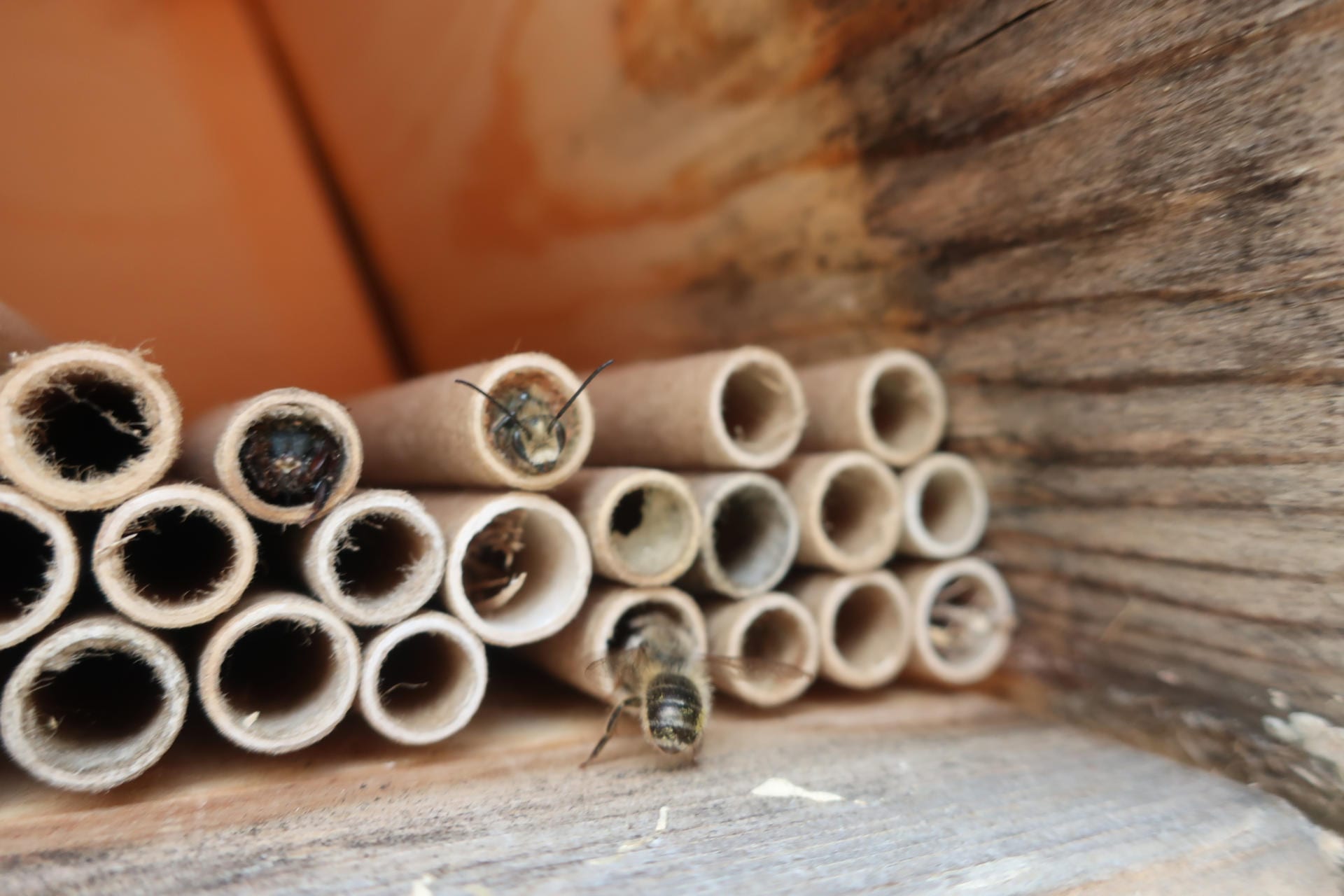
Bee tubes, log and rock piles, water basins, leaf mulch, and bare soil help provide diverse habitat. Pesticides and herbicides are never used – plants are given tough love.
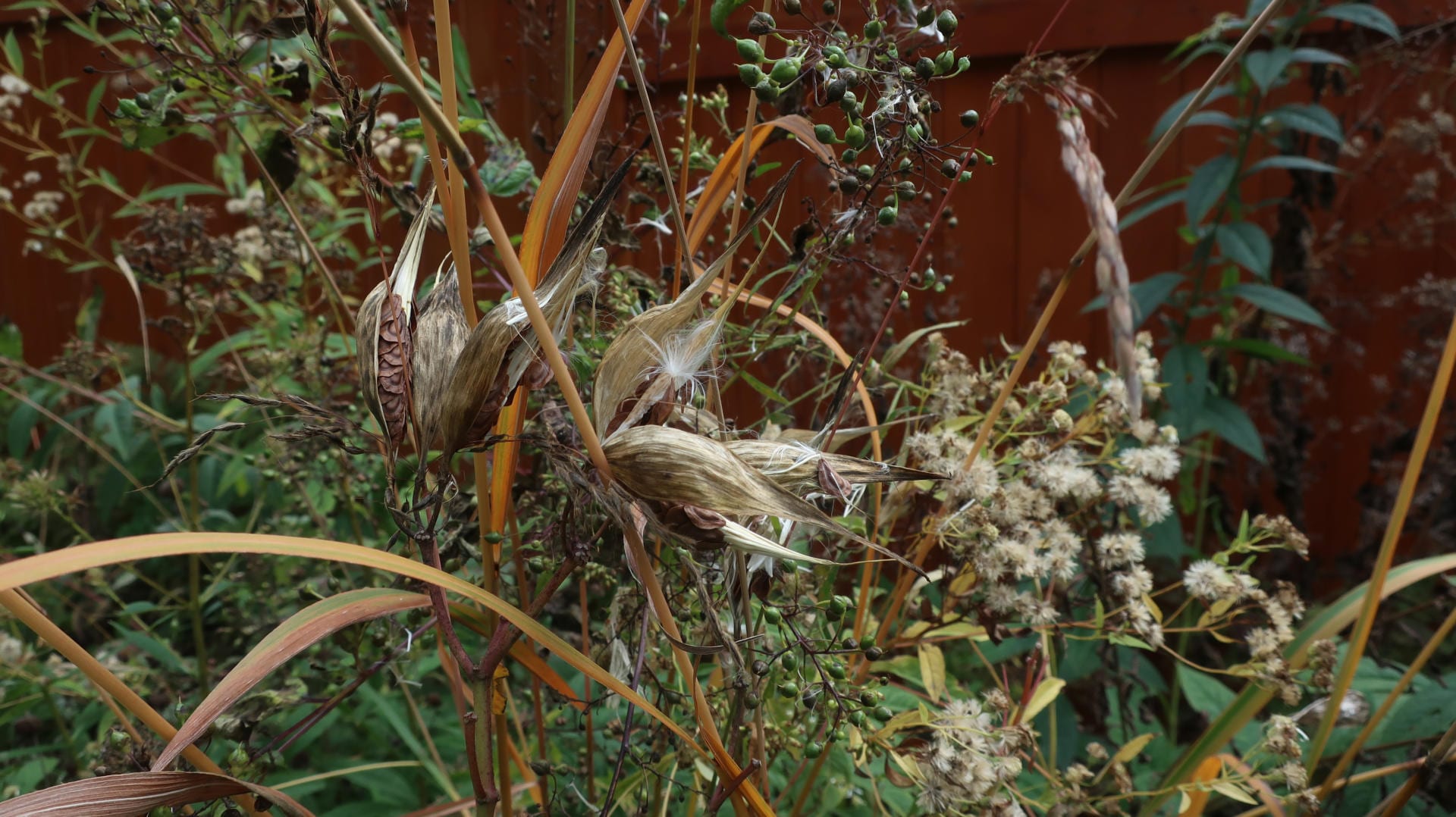
To create habitat and beauty, plants are left standing through the winter. Seeds feed wildlife including juncos, chipping sparrows, and finches. “Messy” debris helps insects overwinter.
About Our Tour Host
Willow Cheeley, RLA, Willow is a Registered Landscape Architect with a lifelong interest in ecological design. Her background includes a degree in Natural Resources, the design of municipal parks and playgrounds, working with volunteers, and developing creative ways to engage and educate the public.
***
Each author appearing herein retains original copyright. Right to reproduce or disseminate all material herein, including to Columbia University Library’s CAUSEWAY Project, is otherwise reserved by ELA. Please contact ELA for permission to reprint.
Mention of products is not intended to constitute an endorsement. Opinions expressed in this newsletter article do not necessarily represent those of ELA’s directors, staff, or members.

